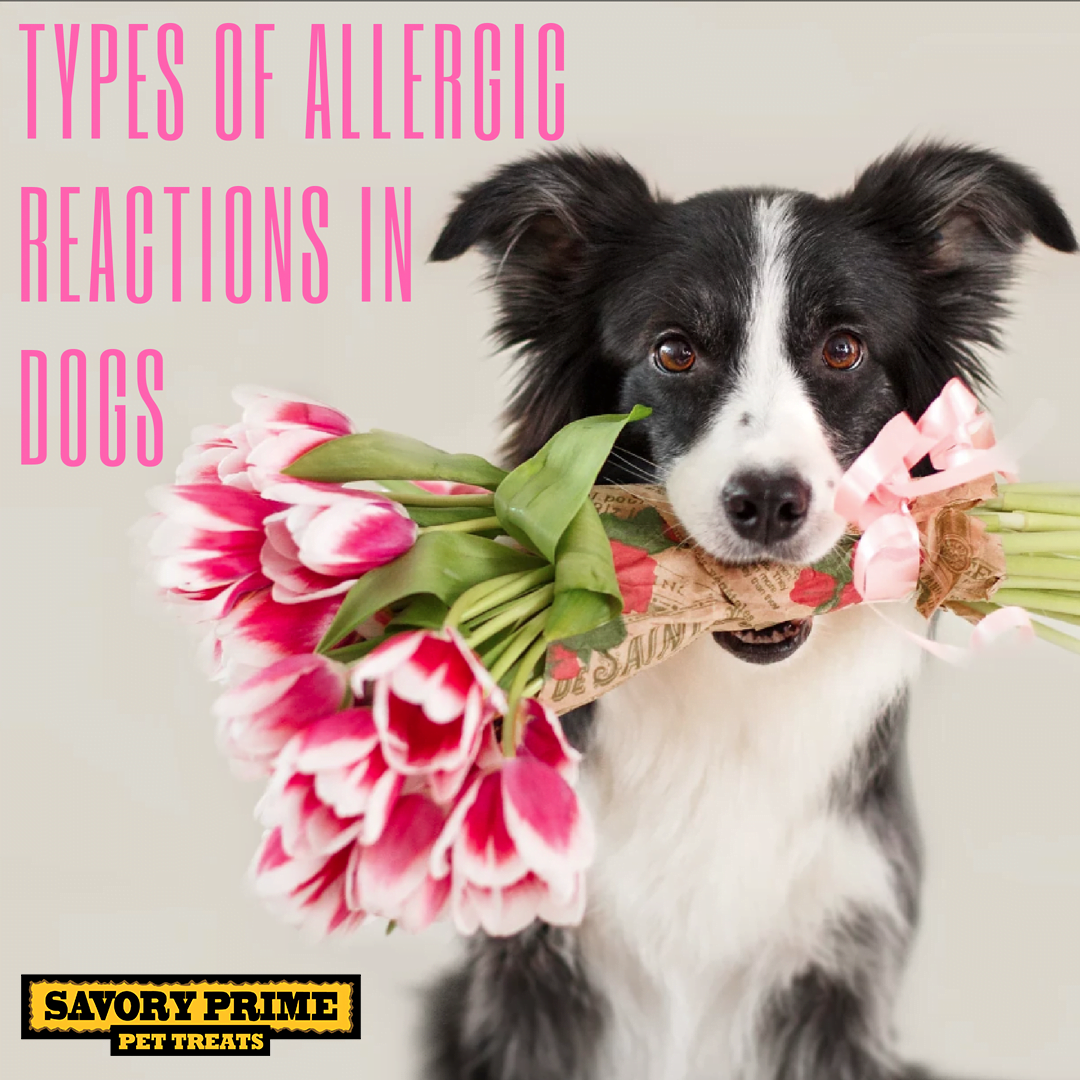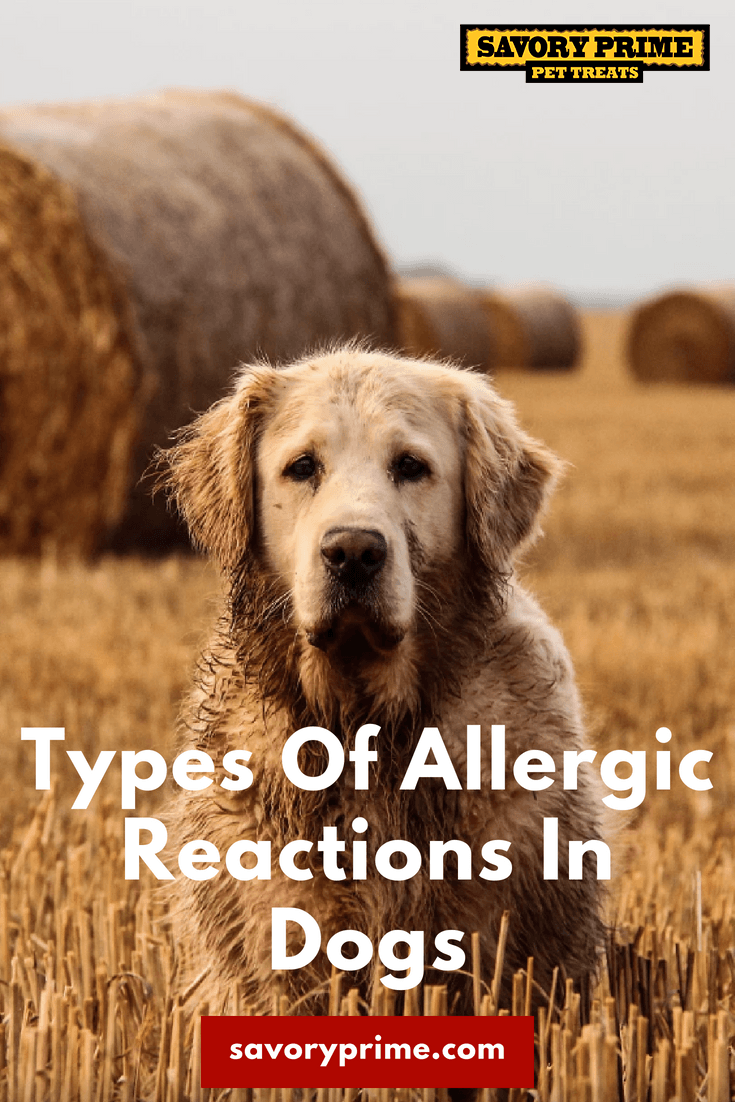What does “allergy” mean to you? Does it mean a life-threatening reaction to a bee sting? Does it suggest an itchy dog? Hives? All of these are examples of the many different types of allergic reactions. Learn how to manage each one.
Anaphylactic Reactions in Dogs
Have you ever heard of a person dying after eating one shrimp because he was deathly allergic to seafood? Or someone having to inject himself after being stung by a bee? These are anaphylactic reactions, the scariest and most lethal allergic reactions we see.
In dogs, we see major reactions like this if they are bitten by an insect (bee or wasp) or if they have an injection of medication (like a vaccine) they’re allergic to. Antibodies produced by the host react to the substance, dropping blood pressure and sending the body into shock. If a dog has had a past incident and survived, the owner may carry an EpiPen, but sometimes the first occurrence can lead to death. Fortunately, these reactions are very rare in dogs.
Facial Swelling and Hives in Dogs
The next reaction, in terms of severity, is swelling of the throat or face, including the lips and sometimes the eyelids and ear flaps.
If a dog has swelling of the face, what vets call angioneurotic edema, this is actually a good sign. I say this because the dog has likely passed the time for a fatal reaction to occur, and his life is rarely in danger. The swelling occurs 30 minutes to a few hours after the exposure. A veterinarian will often give dogs with this reaction an antihistamine injection. Untreated, it may take a day or two for the swelling to subside.
A different reaction we see 6 to 24 hours after exposure to the antigen is hives. Also called urticaria, this reaction consists of very itchy swellings in the skin. These are easy to spot in short-coated dogs, but with dogs with long hair, you may be more likely to feel them rather than see them. An antihistamine is again in order to treat the reaction.
Skin Allergies In Dogs
The last reaction is allergic dermatitis, and it is rampant in dogs. Three things cause allergic dermatitis: fleas, food allergies, and atopic—or environmental—allergies.
Dermatitis from fleas is the easiest to treat. In these cases, the dog reacts to saliva injected into the skin as the flea feeds. It’s like having mosquito bites all over you. The key to this type of allergy is that the itch is more intense over the tail head. You usually see fleas, or you may find flea dirt, which looks like black pepper on the skin surface.
We treat these cases by applying a product that kills fleas before they bite. I’ve seen dogs that have had horrible red skin covered in scabs, and a week after a flea medication is applied, they are healing beautifully.
In an atopic allergy, the dog reacts to airborne allergens such as pollen, molds, fungus, and house dust. These are often seasonal, meaning that the dog itches only at certain times of the year. The itch can be anywhere on the body, but it is common for affected dogs to scratch their ears or lick their paws.
Food allergies are reactions to foods, specifically ingredients in the food like corn or chicken. The symptoms are the same as atopic allergies.
There are several possibilities why food allergies develop. Some dogs have a genetic predisposition to developing allergies. The same holds true for atopic allergies. The other contributing factor to food allergies is constant exposure to the same ingredients. For example, if you have continually fed a lamb and rice diet, the prolonged exposure to those ingredients can cause intestinal inflammation and what we call “leaky gut syndrome,” in which the antigen is absorbed through the permeable gut lining. The reaction manifests in the skin, creating the itch. Rotating foods can help prevent allergy development. Common foods to trigger skin allergies including grains (e.g., corn, wheat, rice, barley, oats) and chicken.
To determine which food is causing an allergic reaction, we begin with an elimination trial. We take every food ingredient the dog is currently eating out of the diet and offer a food containing ingredients the dog has never had. So, if you were feeding a lamb and rice diet, a logical choice could be salmon and potato. Of course, all treats and snacks are avoided because they can be creating the reaction as well. We feed the new diet exclusively for at least six weeks before we determine if it is working.
Another thing we can do for dogs with atopic or food allergies is to add an omega-3 fatty acid source to reduce the skin inflammation. Salmon oil, slowly introduced to achieve a dose of 1,000 mg for each 10 pounds body weight is the standard. In severe cases, medication can be added, and your veterinarian is the best source for advice on this.
As you can see, allergies show up in different ways. Some are life-threatening and can cause death in minutes. Others, although less serious, are a source of considerable frustration. Each is treated differently—speak to your veterinarian about the best medical solution.
Allergic Reactions Seen in Dogs
| Type | Outcome |
| Anaphylactic reaction | fatal if not treated |
| Edema of face or throat | rarely fatal, easily treated |
| Urticaria (hives) | very itchy but no threat to life |
| Allergic dermatitis | itchy ears, paws, or all over, but no threat to life |

Recent Pet Posts
Blog Categories
Product categories
- Accessories (7)
- Chicken & Veggie Wraps (8)
- Grillers Jerky Tenders (4)
- Jerky Treats (10)
- Made in the USA (9)
- Non-Rawhide Treats (28)
- Beggar Bone (11)
- Bully Sticks (4)
- Butcher Bone (4)
- Cod Skin Fish Treats (3)
- Pork Skin Twists (2)
- Pressed Rawhide Bones & Rolls (16)
- Bones & Rolls (6)
- Pressed Rawhide Bulk (6)
- Twist Sticks (4)
- Savory Munchies (13)
- Supreme Bones & Rolls (48)
- American Rawhide Bulk (16)
- Rawhide Bones (14)
- Rawhide Chips (6)
- Rawhide Rolls & Sticks (12)
- Uncategorized (8)




